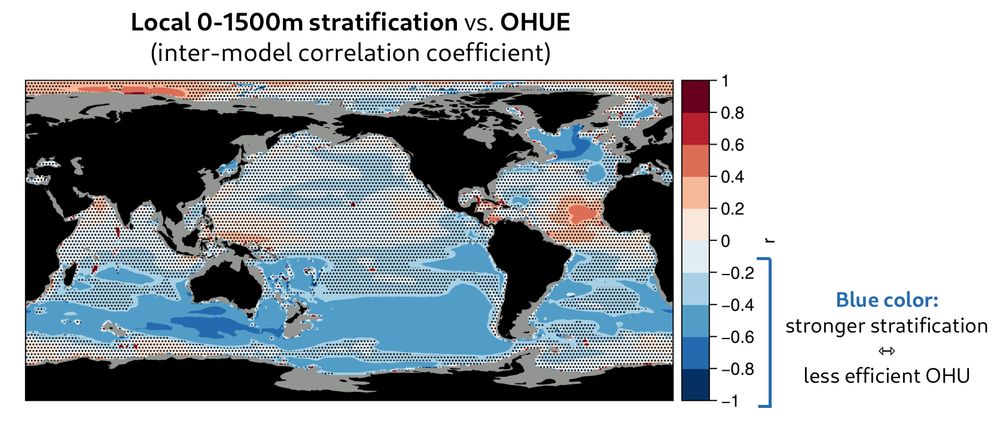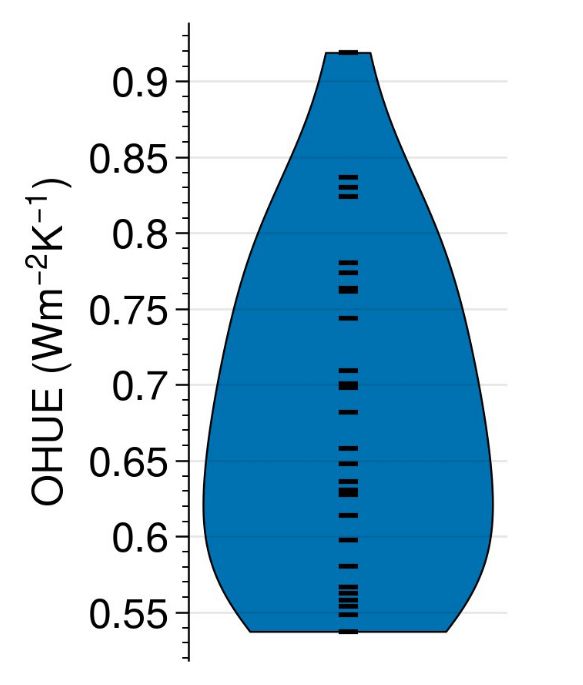- OHU +3–14%
- Cloud feedback +19–32%
- Global surface warming +6–7%

- OHU +3–14%
- Cloud feedback +19–32%
- Global surface warming +6–7%
More sea ice now → more warming later
This is evident as a strong correlation across CMIP6 models (and it also holds in CMIP5)

More sea ice now → more warming later
This is evident as a strong correlation across CMIP6 models (and it also holds in CMIP5)
Models with more sea ice today also simulate colder Southern Ocean SSTs, a colder deep ocean, and more mid-latitude cloud cover.
In the future, these models lose more sea ice and clouds, amplifying SW cloud feedback, surface warming, and OHU.

Models with more sea ice today also simulate colder Southern Ocean SSTs, a colder deep ocean, and more mid-latitude cloud cover.
In the future, these models lose more sea ice and clouds, amplifying SW cloud feedback, surface warming, and OHU.
As CMIP6 models are too stratified in precisely these regions on average, they tend to underestimate OHUE.

As CMIP6 models are too stratified in precisely these regions on average, they tend to underestimate OHUE.
This is because stratification in these regions is linked to large overturning cells: the Southern Ocean upper cell and the AMOC.

This is because stratification in these regions is linked to large overturning cells: the Southern Ocean upper cell and the AMOC.
However, current-generation climate models simulate a large range of values for this quantity, almost spanning a factor of 2:

However, current-generation climate models simulate a large range of values for this quantity, almost spanning a factor of 2:

